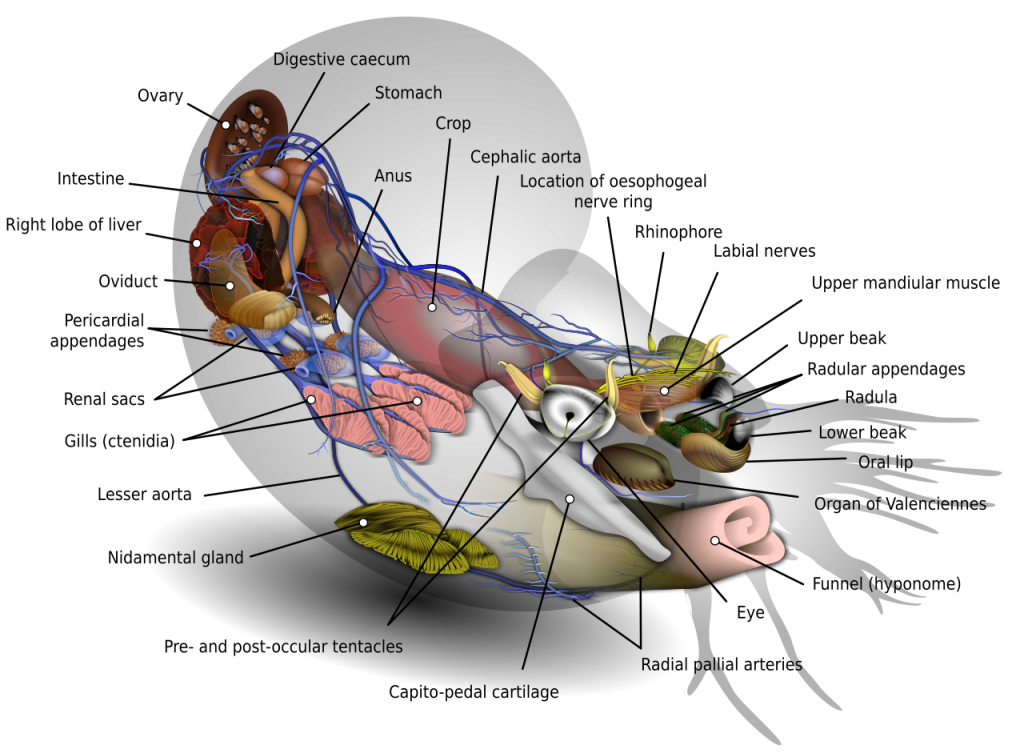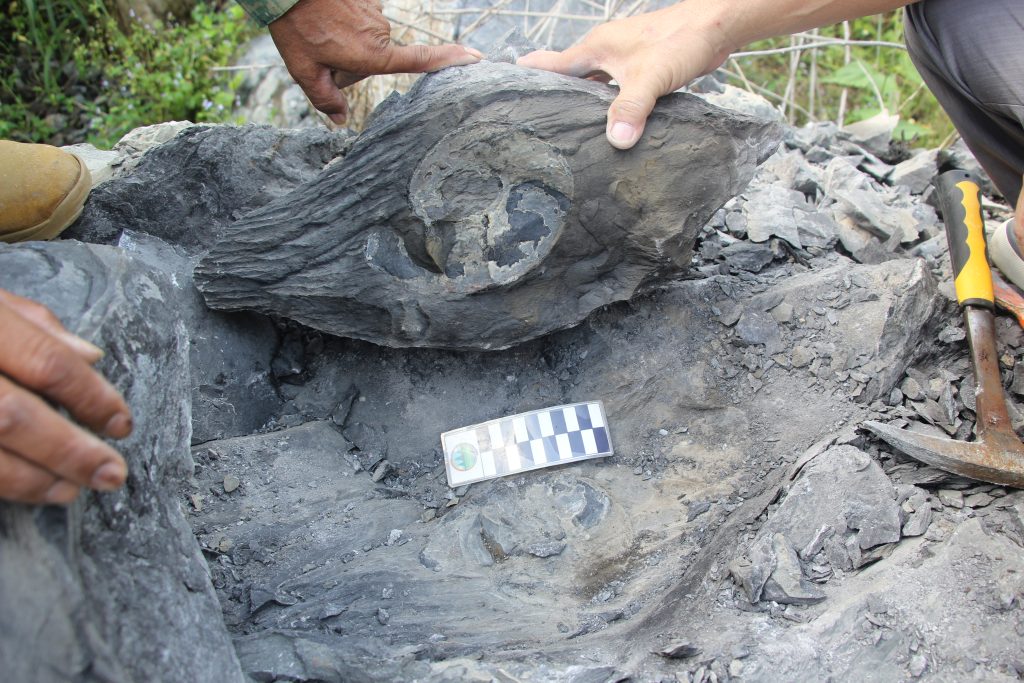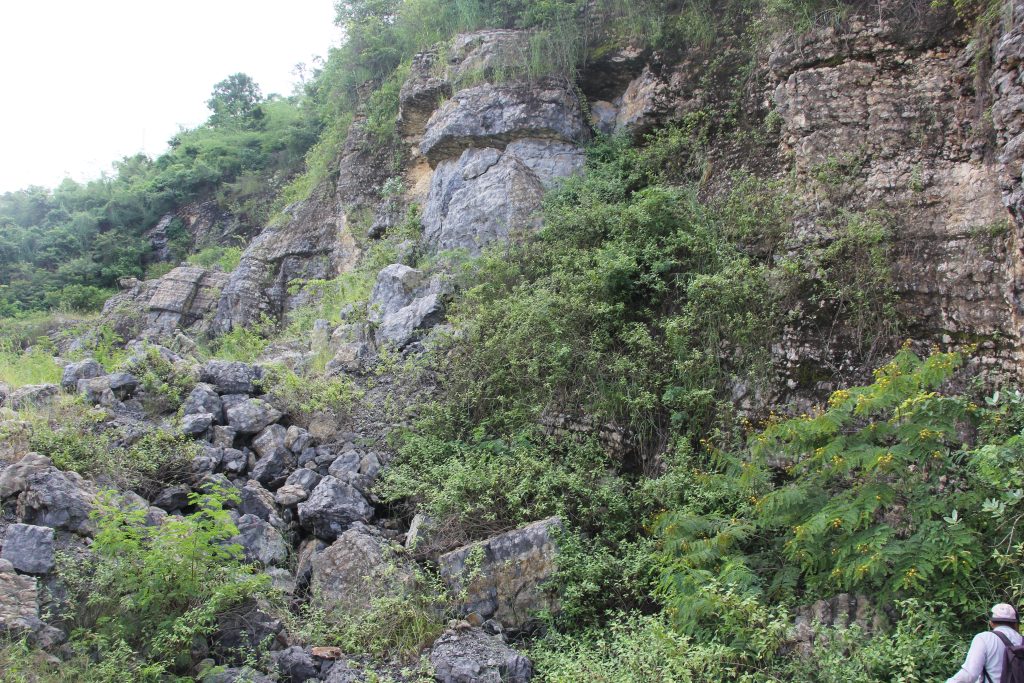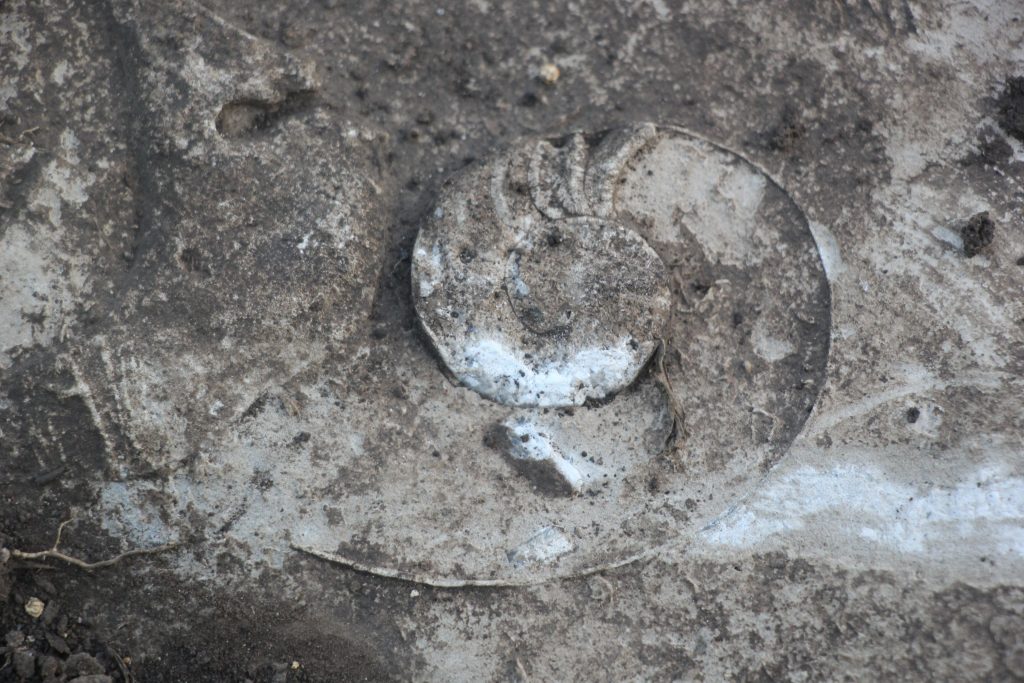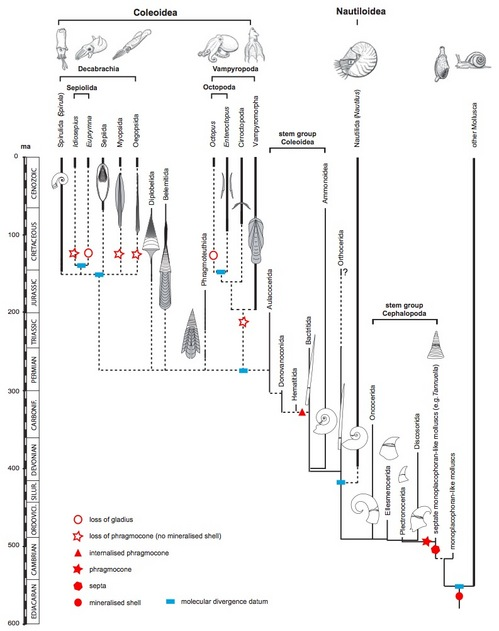អ្វីជាផូស៊ីល? ផូស៊ីលជាស្នាកស្នាមឬសំណល់របស់ភាវរស់ជំនាន់ដើម ដែលបន្សល់ទុកនៅក្នុងថ្ម។ ផូស៊ីលអាចជាឆ្អឹង គម្របសារពាង្គកាយ ដូចជាសម្បកសិប្បីសត្វឬ ស្នាកស្នាម នៃភាវៈរស់។ ការសិក្សាផូស៊ីលហៅថាបាសាណីភូតវិទ្យា(Paleontology)។ ក្នុងពេលបច្ចុប្បន្ននេះមានសារៈមន្ទីរធម្មជាតិធំៗលើភិភពលោកជាច្រើនបានដាក់តាំងបង្ហាញអំពីផូស៊ីលសត្វ ដើមឈើ ជាពិសេសពពួកសត្វដាយណូស័រ។ ផូស៊ីលជាច្រើនដែលអ្នកវិទ្យាសាស្ត្របានរកឃើញនិងកត់ត្រាហៅថា Fossil Record (កំណត់ត្រាផូស៊ីល)។ តាមរយៈកំណត់ត្រាផូស៊ីល អ្នកវិទ្យាសាស្ត្រអាចសិក្សាអំពីការវិវត្តន៍របស់ភាវរស់លើផែនដី គេអាចស្គាល់ប្រវត្តិនៃការកកើត ការរីកចម្រើន និងការរលត់ផុតពូជនៃប្រភេទភាវរស់ខ្លះ។ ការសិក្សាប្រភេទផូស៊ីលដែលរស់នៅក្នុងសម័យកាលណាមួយនៃធរណីកាលដោយសម្អាងលើលក្ខខណ្ឌជីវិតនៃប្រភេទផូស៊ីលនោះ។
សត្វ Nautilidae គឺជាsសណ្តាន (Family) នៃពពួកសត្វ ដែលស្ថិតនៅក្នុងសាខា Mollusca ដែលក្នុងនោះមានថ្នាក់ Class Gastopoda ដែលមានពួកខ្យង Class Bivalvia ដែលមានពួកលាស គ្រំ ជាដើម និង ថ្នាក់ Class Cephalopoda ដែលពួក Nautililida នៅក្នុងនោះផងដែរ។ ថ្នាក់ Class Cephalopoda ក្នុងថ្នាក់នេះមានបែងចែកជាថ្នាក់រង Subclass ដែលមានពពួកម៉ឹក អាម៉ូណាយ Ammonite និង Nautilodea។ Subclass Nautilodea ត្រូវបានបៃងចែកជា Other (លំដាប់) ដែលមាន Order Nautilida, Order Actinocerida, Order Orthocerida ជាដើម។ Order Nautilida ដោយបែងចែកជាផ្នែកតូចទៀត Superfamily Nautilaceae និងបែងចែកបន្តទៅសណ្តាន Family Nautilidae។ សណ្តានសត្វ Nautilidae មានសំបកដូចខ្យង អវៈយវៈប្រហែលម៊ឹក(រូបលេខ២-៤)។
តារាងវគ្គីសាស្ត្រ (Taxonomy)
| Kingdom រជ្ជៈ | Phylum សាខា | Class ថ្នាក់ | Subclass ថ្នាក់រង | Order លំដាប់ | Superfamily | Family សណ្តាន | Genes ពួក | Species ប្រភេទ |
| Animal | Mollusca | Cephalopoda | Nautiloidea | Nautilida | Nautilaceae | Nautillidae |
ការសិក្សាស្រាវជ្រាវនៅកម្ពុជា
សណ្តានសត្វ Nautilidae ក្នុងពេលបច្ចុប្បន្ន យើងមិនមានពត៌មានស្តីពីប្រភេទសត្វនេះនៅមានវត្តមាននៅក្នុងក្នុងប្រទេសកម្ពុជានាពេលបច្ចុប្បន្ននោះទេ។ ចាប់ពីឆ្នាំ២០១៩មកនាយកដ្ឋានតំបន់បេតិកភណ្ឌ អគ្គសហគមន៍មូលដ្ឋាន នៃក្រសួងបរិស្ថានបានចាប់ផ្តើមធ្វើការសិក្សាស្រាវជ្រាវអំពីផូស៊ីលនៅកម្ពុជា។ យើងបានរកឃើញពពួកនៃសណ្តានសត្វ Nautilidae នៅស្ថានីយផូស៊ីលភ្នំប្រាំពីរ ខេត្តបាត់ដំបង ភ្នំខ្លាកូន ភ្នំកន្ទួត ក្នុងខេត្តបន្ទាយមានជ័យ។ ភស្តុតាងដែលរកឃើញនេះគ្រាន់អាចយល់ពី សណ្តាន Family Nautilidae តែយើងមិនទាន់ដឹងពពួក (Genes) និងប្រភេទ (Species) នៅឡើយទេ។ នៅភ្នំប្រាំពីរ ខេត្តបាត់ដំបង យើងបានរកឃើញសំណាកផូស៊ីលនៃសណ្តាន Family Nautilidae (រូបលេខ៥-៧) ដែលស្ថិតនៅចង្កេះភ្នំ ជាទីតាំងដែលធ្លាប់បានយកថ្ម ដើម្បីកសាងផ្លូវ (រូបលេខ៨)។ ផូស៊ីល Nautilidae ដែលបានរកឃើញមានទំហំ ចន្លោះ១៥ស.ម ទៅ២០ស.ម ដែលរកឃើញក្នុងបំណែកថ្មកំបោរ ដោយកាលដើមឡើងជាល្បាប់ភក់ដែលមានសារធាតុកំបោរច្រើនទើបក្រោយមកក៏បានកកជាថ្ម ហើយវាបានរក្សារូបរាងនៃផូស៊ីលមកដល់បច្ចុប្បន្ននេះ។ ស្ថានីយផូស៊ីលភ្នំខ្លាកូន ស្ថិតនៅក្នុងខេត្តបន្ទាយមានជ័យក៏បានជួបប្រទះ ផូស៊ីល Nautilidae ដែរដែលស្ថិតនៅផ្នែកខាងលើនៃកំពូលភ្នំ (រូបលេខ៩) ដែលលេចចេញបាក់កណ្តាលព្រមទាំងមានផូស៊ីលខ្យង និងផ្កាថ្មមួយចំនួនដែលមាននៅក្បែរនោះផងដែរ។
អត្ថបទដើម៖ លោក លឹម វណ្ណច័ន្ទ
————————————–
Pre-historical wildlife: Fossil Nautilidae
What is a fossil? A fossil is any preserved remains of any once-living thing from a past geological age. It could be the bones, exoskeletons, and shells. The subject to study is Paleontology. In the present, many big natural museums are exhibiting animal and wood fossils, especially dinosaurs. Based on fossils, we know the history of geology, increasing and extinction rate of biodiversity.
Nautilidae is a family of Mollusca. Among them, there is a class of Gastropoda (Snails), class Bivalvia (Shells), and Cephalopoda (Nautilidae). Among those classes, there is a subclass that includes Ammonite and Nautilodea. Subclass Nautilodae divides into other orders such as Nautilidae, Actinocerida and Orthocerida. Etc. The order Nautilida divides into a smaller branch which is Nautilaceae. Furthermore, Nautilaceae divides into the family of Nautilidae. The family Nautilidae has snails and some species as octopuses.
The research in Cambodia
Present-day, there is no information about Nautilidae in Cambodia. Since 2019, the department of the cultural region of the general community, the Ministry of Environment started to research fossils in Cambodia. They found Nautilidae at Phnom Pram Pi at Battambang, Konkla mountain, and Kantout mountain at Banteay Meanchey. The findings could tell about the family of Nautilidae, the genes and species are not known. At the foot of Phnom Pram Pi in Battambang, they found the family of Nautilidae. The size of fossils is in a range from 15cm to 20cm. They appear from the fragment of limestone. On the peak of Konkla mountain at Banteay Meanchey has Nautilidae together with the shells and corals.
According to the geology of Cambodia, Pram Pi and Konkla mountain are in the Paleozoic of Permian period (252-259 million years). The finding could tell the existence of Nautilidae, but the genes and species are unknown. It requires further study.




